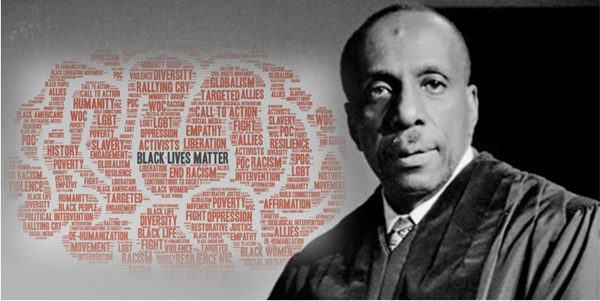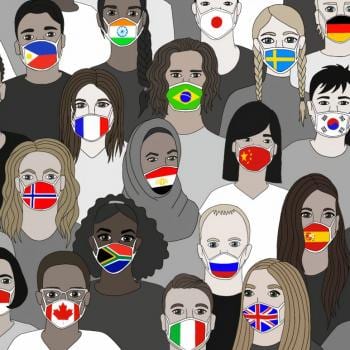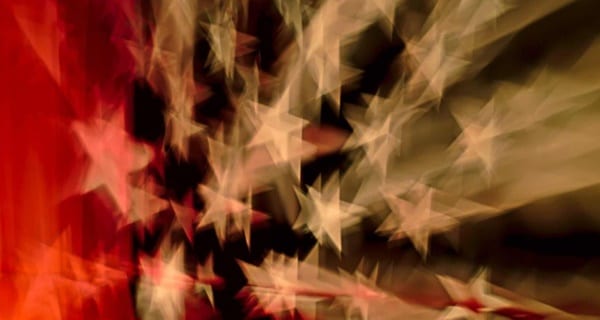In a society in which certain people or groups – by virtue of economic, social, or political power – have dead-weight advantages over others who are essentially without that kind of power, those who are thus disadvantaged know that they cannot protect themselves, and that they cannot demand protection from their persecutors. Any slight conflict, any alleged insult … may bring down upon the full weight of naked physical violence. Even in such a circumstance it is not the fear of death that is most often at work; it is the deep humiliation arising from dying without benefit of cause or purpose.
A few years ago, a terrible thought struck me. It was shortly after news broke about yet another killing of an African American by police, though I do not remember who it was. That’s horrifying in and of itself, that police have killed so many men, women, and even young children of color that recalling who was killed when becomes a blur. But I remember thinking that being black in the United States must be like living in the midst of The Purge. However, instead of crime being legal only one night a year, this entire nation was built on crimes against humanity toward indigenous peoples and Africans brought in chains. And today, there are still no guarantees of safety for African and Native Americans.
Just think – what many of us can only imagine in the realms of dystopian fiction is the daily reality of people of color in the United States today. The fear of which Dr. Thurman wrote seventy years ago in Jesus and the Disinherited – the first “hound of hell” that continually snarls at the heels of those living in the shadow of oppression and threatens to drag them into the pits of despair – that fear still thrives in a world of insecurity and dehumanization.
It is Holy Week, and we are following Jesus as he carries his cross uphill to reveal, in his execution at the hands of a violent world, all the horrors humans inflict upon each other in his stripped, suffering body. So when we turn our eyes to him, we see reflected back to us the pain, cruelty and brutality that the disinherited and exploited have endured in all times and places. The terror of a world built on a constant threat of annihilation is a cross of fear built by generations of oppression, segregation and degradation. That cross is still laid on upon people of color in the United States and around the world as militarized law enforcement at home and wars abroad continue to take one life after another. Howard Thurman locates Jesus in the heart of this oppression and terror to show how the faith he lived and inspired may liberate, from the inside out, those who would otherwise be crushed by this cross.
Those of us who do not live under the weight of this horror and temptation to fear live at the expense of those who do. This is the hideous truth we cannot ignore when it is laid as bare before us as Christ’s cross on Calvary. To recognize the ways in which slavery and exploitation created an economy in which black people were barred from the very profits they generated, to fully comprehend how structural segregation endures long after laws changed, to see how militarized police patrol predominately minority neighborhoods and how the school-to-prison pipeline continues cut off futures before they begin… to wrap our minds around this is to face the devastating truth. Systemic racism has done more than create vast inequities. It has told African Americans that their lives don’t matter. Changes in law and attitude have not done nearly enough to remedy the inequities so deeply rooted in our nation’s history of slavery and Jim Crow as the system of exploitation and dehumanization continually creates new horrors.
Dr. Thurman invites us to see the ways that such a degrading system may abuse the psyche of African Americans if they internalize the dehumanization that continues to mold the contours of their lives. “Under such circumstances there is but a step from being despised to despising one’s self.” He goes on to explain how living under the burden of fear and hopelessness may confine people to an existence of careful avoidance of encounters that may end in humiliation, a sense of shame, injury, or even death. Most heavily, he laments the effect fear has on children when it is passed down from those who have lived lives devoid of protection and opportunity. “A ceiling is placed on [the] dreaming [of the child of the disinherited] by the counsel of despair coming from his elders, whom experience has taught to expect little and to hope for less.”
This book was written seventy years ago, and yet, how often today do we read about parents who teach their children exactly how to act, from the look in their eyes to the placement of their hands, around police in order to avoid being killed?
As we look to the cross, do we not tremble to see the pain and abandonment and cruelty that Jesus bore? Must we not also tremble to see the burden of fear thrust on the shoulders of people of color? To truly see Jesus is to see the pain that nations built on violence have inflicted on the oppressed and scapegoated people in all times and places. To look on Jesus honestly is to recognize our place within those violent systems. For those of us who have benefited at the expense of others, reading Jesus and the Disinherited is an indictment as surely as gazing upon the cross is.
But for the disinherited, for people suffering fear of the threat of violence, to look to Jesus is to see the God of heaven and earth suffering with them. The hope for the disinherited lies in knowing that God so loves them as to endure the same weight of imperial violence – with all of its lashes of injustice, mockery, and abuse – that they endure. The God that cares for the sparrow and the lily does indeed care for the disinherited, no matter how much the world is structured to convince them otherwise. In finding their identity in the suffering God who overcomes suffering and swallows death in life, the disinherited find the beginning of hope. It is not enough to change the world around them, but it is enough to keep the disinherited from falling into despair. It is enough to awaken to them the truth of their own dignity, that they may live it out. And in living out that dignity, the disinherited do begin to change the world around them, being the first to initiate, inherit, and invite those who recognize that dignity into the kindom of God.
Thus, the hope that Jesus gives to the disinherited for overcoming fear becomes our hope for overcoming fear as well. For when the disinherited live into the love that God gives them, dispelling the fears that so stifled their existence, they expose the lies that those fears are built upon. The truth that sets them free also sets free those of us with privilege (which is but the pseudo-protection that comes from better footing on a crumbling foundation) and breaks down the barrier between us and them when we dare to act on that truth. Acting on that truth is making what Thurman calls a “great redemptive effort” to change the social, political, and economic arrangements that maintain the yawning gap between the powerful and the oppressed. Building a new world in which we recognize each other as the beloved children of God that we are – that is the salvation that Jesus initiates, the poor and disinherited lead, and in which the privileged are invited to participate by doing what is necessary to transform privilege into justice.
That salvation comes when we overcome the deception upon which injustice is founded. The deceit that shapes the world also tempts the disinherited to live by deception as a tool for survival. Deception is the second hound of hell, but while it may tempt the disinherited, it holds the privileged in its grasp, for the foundation that holds some at an advantage over others is a lie. We will explore that lie in our next installment as we continue to walk through Holy Week with Jesus and the Disinherited.
Images: Black Lives Matter Word Cloud via 123rf.com and “Howard Thurman” by On Being. Available on Flickr via Attribution Noncommercial 2.0 Share-Alike Creative Commons license.












